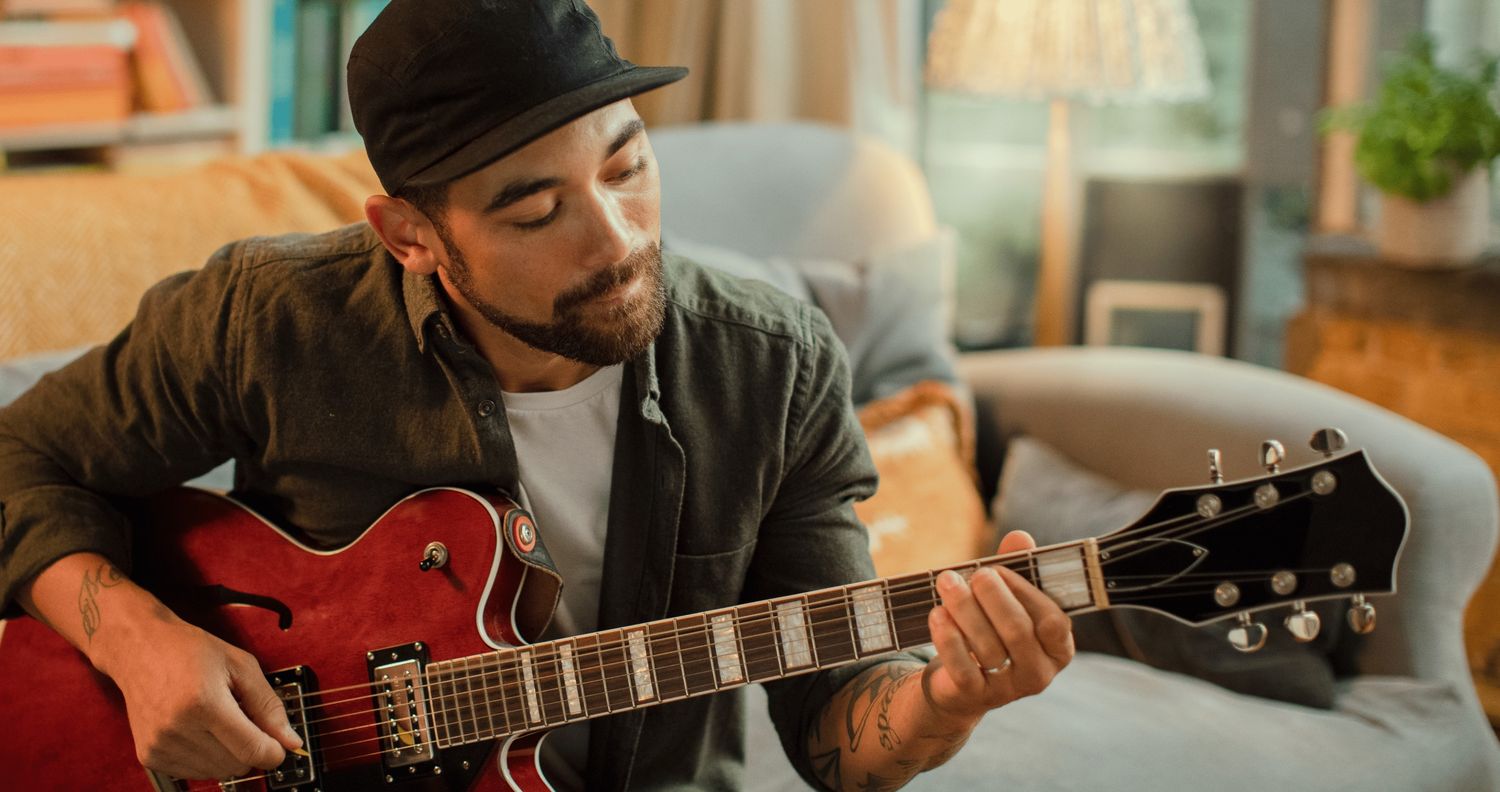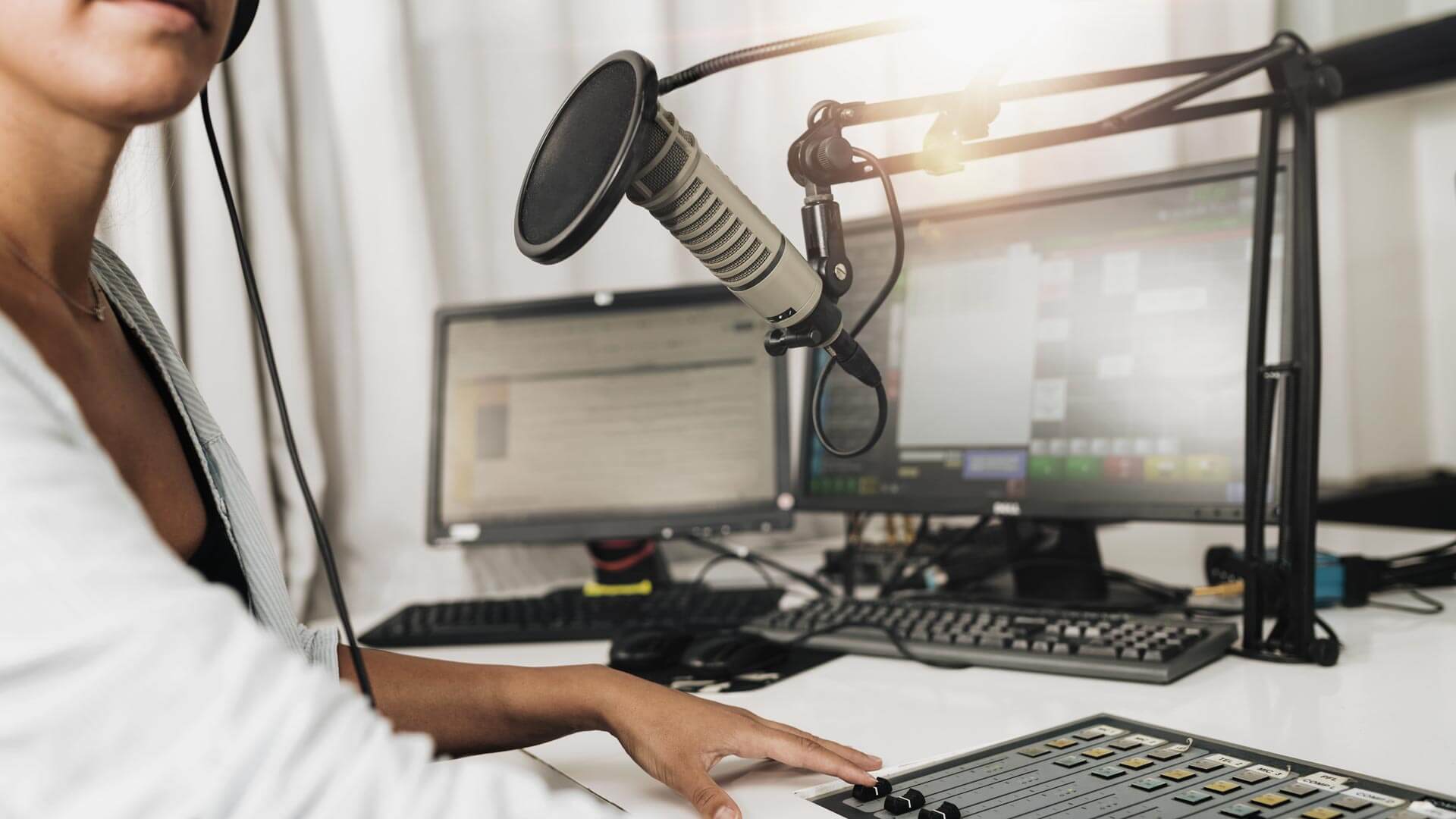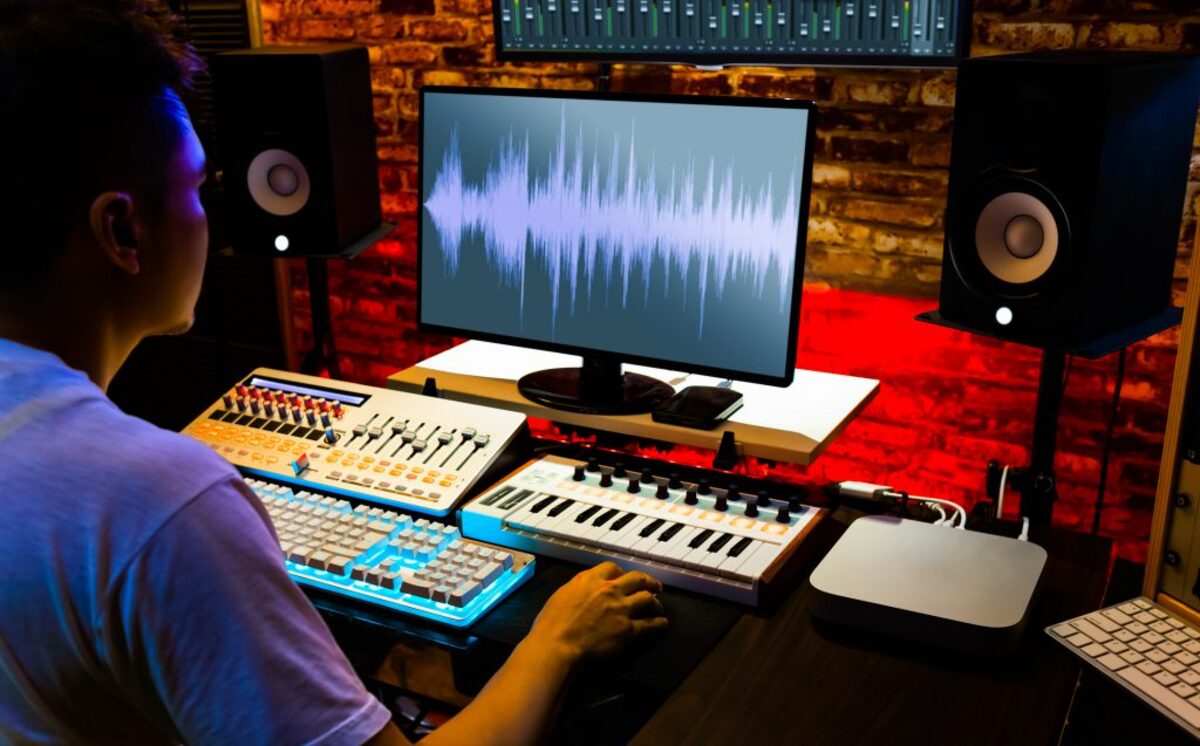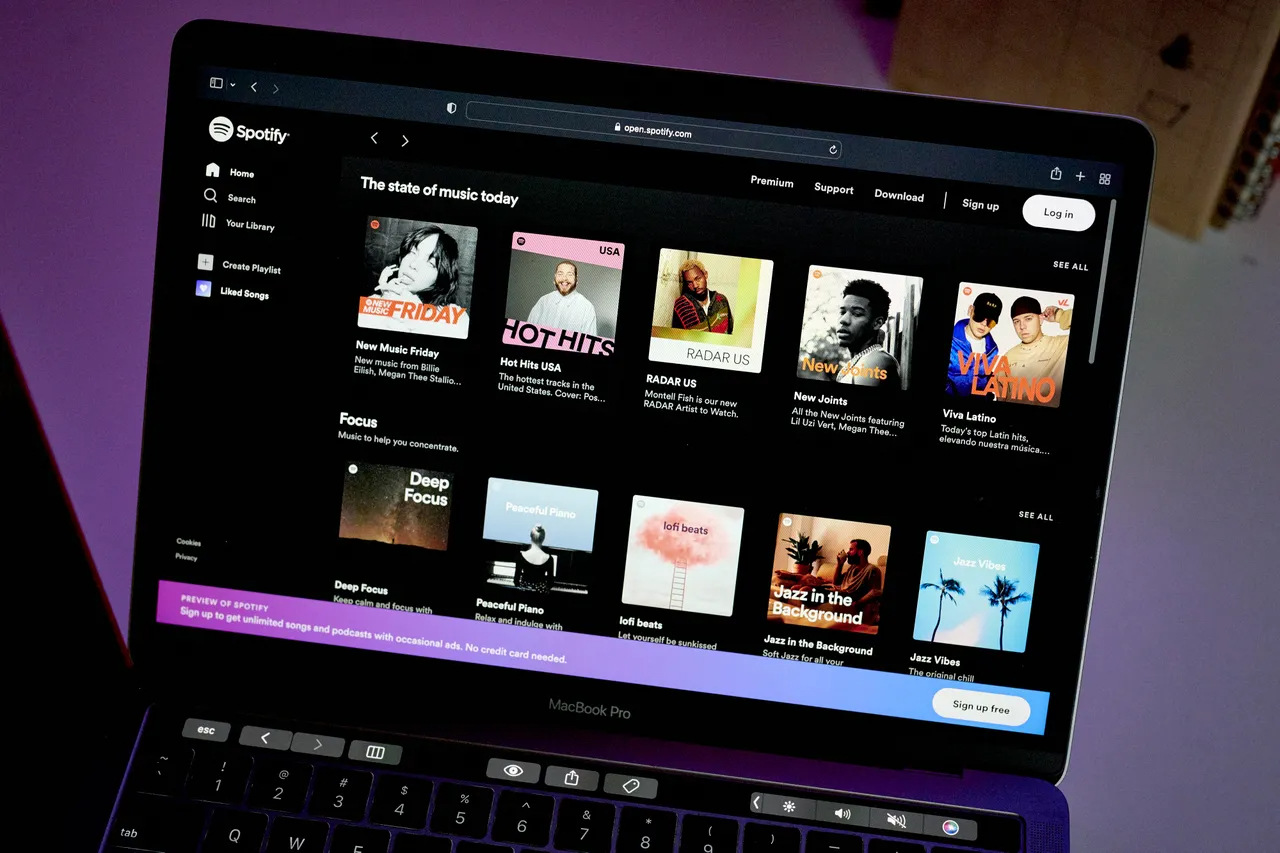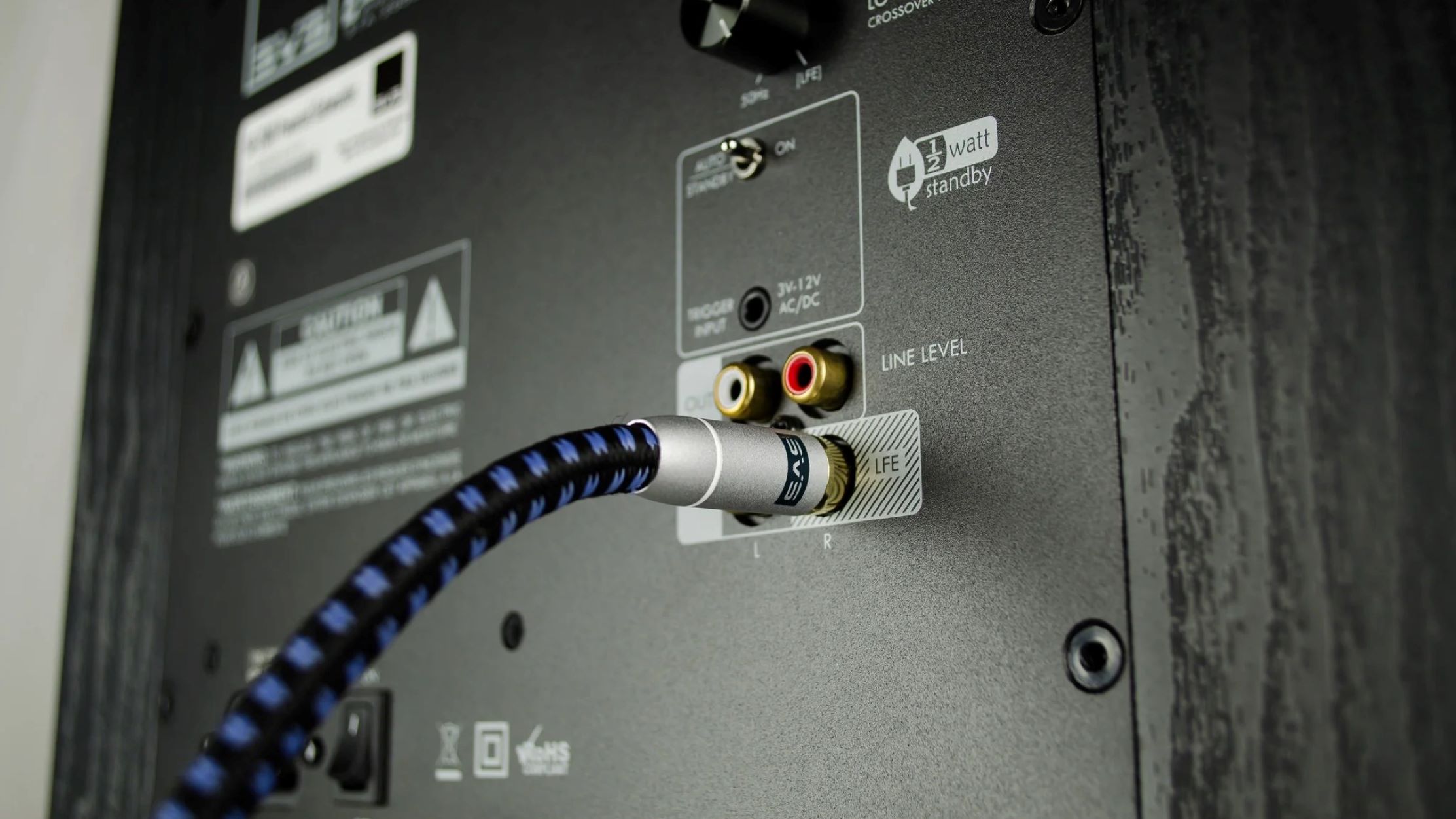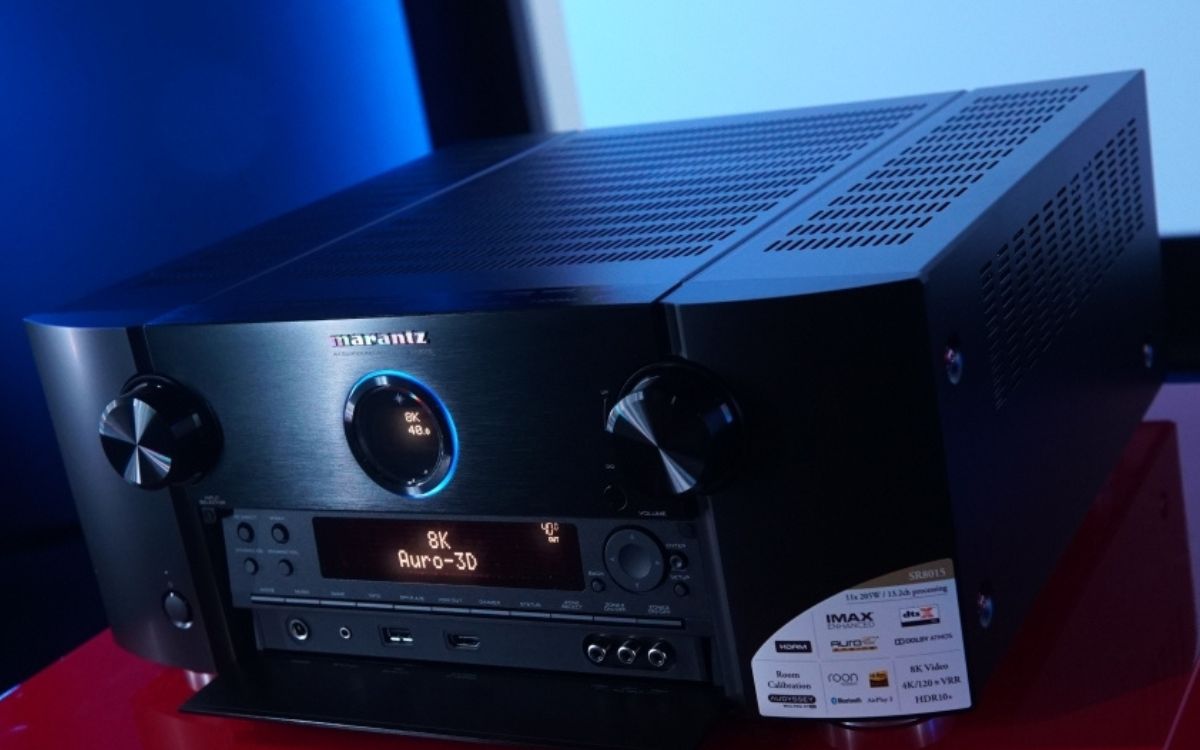Home>Events & Info>Podcast>What All Do I Need To Start A Podcast


Podcast
What All Do I Need To Start A Podcast
Modified: February 16, 2024
Learn the essentials to start your own podcast. From equipment to content planning, discover everything you need for a successful podcasting journey.
(Many of the links in this article redirect to a specific reviewed product. Your purchase of these products through affiliate links helps to generate commission for AudioLover.com, at no extra cost. Learn more)
Table of Contents
Introduction
Welcome to the exciting world of podcasting! In recent years, podcasts have exploded in popularity, captivating audiences around the globe. Whether you have an idea for a niche podcast or simply want to join the ranks of podcasters sharing their passions and knowledge, this article will guide you through the essential steps to get your podcast off the ground.
Podcasting offers a unique platform to connect with listeners and share your voice in an intimate and engaging way. With the right planning and resources, you can create a successful podcast that resonates with your target audience.
Before diving into the technical aspects, take the time to define the central theme or concept of your podcast. Consider what topics interest you, what expertise or perspective you can bring to the discussion, and who your target audience might be. Establishing a clear vision for your podcast will help you craft compelling content that engages and resonates with your listeners.
Once you have a solid concept in mind, it’s time to move on to the practical aspects of podcasting. In the next sections, we’ll cover the equipment and software you’ll need, as well as the recording and editing process. We’ll also discuss creating eye-catching podcast artwork, finding a hosting platform, promoting your podcast, and even exploring monetization opportunities.
Whether you’re a beginner or a seasoned content creator, this guide will provide valuable insights and tips to help you start your podcasting journey on the right foot.
So, without further ado, let’s dive into the exciting world of podcasting and discover how you can create a podcast that will captivate and engage your audience!
Planning your Podcast
Before hitting the record button, it’s essential to spend some time planning your podcast. This phase sets the foundation for your show and ensures that you deliver valuable and engaging content to your listeners.
First and foremost, determine your podcast’s target audience. Consider who you want to reach and what interests or challenges they may have. This will help you tailor your content to their specific needs, ensuring that it resonates with them on a deeper level.
Next, brainstorm the format and structure of your podcast. Will it be an interview-style show, a solo monologue, or a combination of both? Think about the tone and atmosphere you want to create and how it aligns with your target audience’s preferences.
Creating a content calendar or episode outline is crucial to keep your podcast organized and consistent. Plan topics and themes for each episode, and consider how they will progress over time. Having a content roadmap in place will minimize stress and keep you on track for regular releases.
Researching and identifying potential guests or experts in your niche is another crucial step. Invite influential and knowledgeable individuals who can provide valuable insights and attract a wider audience. Don’t forget to reach out to your guests well in advance to schedule interviews and ensure their availability.
Remember, the success and sustainability of your podcast rely on consistently delivering high-quality content. Outline a schedule for episode releases, whether it’s weekly, bi-weekly, or monthly, and commit to sticking to it. Consistency builds trust with your audience and keeps them coming back for more.
Lastly, consider how you’ll differentiate your podcast from others in the same genre. Research existing shows and identify gaps in content or unique angles you can explore. Bring your own voice, personality, and expertise to the table, and find ways to add value that sets you apart from the competition.
By investing time in the planning phase, you’ll have a solid foundation for your podcast. With a clear understanding of your audience, format, content strategy, and scheduling, you’ll be well-prepared to launch your podcast and begin creating extraordinary episodes that captivate and engage your listeners.
Equipment and Software
When it comes to podcasting, having the right equipment and software is essential to ensure high-quality audio recordings as well as a smooth editing process. While you don’t need to break the bank to get started, investing in a few key items can significantly improve the overall production value of your podcast.
First and foremost, you’ll need a reliable microphone. USB microphones are a popular choice for beginners due to their affordability and ease of use. The Audio-Technica ATR2100x-USB and the Blue Yeti are highly recommended options that deliver excellent sound quality. However, if you’re willing to invest a bit more, consider a dynamic microphone such as the Shure SM7B or the Rode PodMic for professional-grade audio.
In addition to a microphone, you’ll need headphones to monitor your recordings. Closed-back headphones are preferable as they provide better sound isolation, allowing you to catch any background noise or audio issues. The Audio-Technica ATH-M50x and the Sony MDR-7506 are popular choices among podcasters.
To record your podcast, you’ll require recording software. Audacity is a free and user-friendly software that offers basic editing capabilities. If you’re looking for more advanced features, Adobe Audition and Reaper are excellent options that provide a wider range of editing tools.
Another crucial piece of equipment is a pop filter. Pop filters help reduce plosive sounds, such as “p” and “b” sounds, which can cause distortion in the audio. The Aokeo Professional Microphone Pop Filter and the On Stage Stands ASVS6GB are affordable and effective options.
If you plan on having remote guests or conducting interviews online, a reliable communication tool is essential. Skype and Zoom are popular choices and offer recording capabilities for remote interviews. Alternatively, platforms like Zencastr and SquadCast specialize in recording high-quality remote interviews without the need for external software.
To improve the acoustics of your recording space, consider investing in acoustic treatment. This can include foam panels, bass traps, and diffusers, which help reduce echo and improve sound quality. However, if you’re on a budget, even simple solutions like using blankets or pillows to dampen reflections can make a noticeable difference.
Remember to test your equipment and software before recording your first episode. Familiarize yourself with the settings and experiment with microphone placement and gain levels to optimize your audio quality.
By choosing the right equipment and software for your podcast, you’ll be well on your way to delivering professional-sounding episodes that keep your listeners engaged and coming back for more.
Recording and Editing
Now that you have your equipment set up, it’s time to delve into the recording and editing process. This is where you bring your podcast to life and polish it into a finished product that you’re proud to share with your audience.
When it comes to recording, find a quiet and acoustically treated space to minimize background noise and echo. Ensure that your microphone is positioned correctly, approximately 6-8 inches away from your mouth. Speak directly into the microphone and maintain a consistent distance throughout the recording to ensure consistent audio quality.
Before you hit the record button, do a quick sound check to ensure your audio levels are set correctly. Aim for a signal that doesn’t peak (distort) or sit too low (creating noise). It’s better to have a slightly lower volume that can be boosted in post-production than to have distorted audio that is difficult to clean up.
When recording, remember to speak naturally and with enthusiasm. Aim for a conversational tone, as if you’re having a friendly discussion with your audience. Don’t be afraid to pause and gather your thoughts or re-record sections if necessary. Editing allows you to remove any mistakes or unwanted content, so focus on capturing the best possible raw audio.
Once you’ve finished recording, it’s time to move on to the editing stage. Start by importing your audio files into your chosen editing software. Listen to the recording and remove any audio glitches, background noises, or long pauses that may disrupt the flow of the episode. Use your editing software’s tools to cut, trim, and rearrange your audio as needed.
As you edit, keep in mind the overall pacing of your podcast. Remove any repetitive or tangential segments that may detract from the main focus of the episode. Pay attention to transitions between different segments or topics, ensuring they are smooth and seamless.
Don’t forget to add intro and outro music to give your podcast a polished and professional touch. Royalty-free music platforms like Epidemic Sound or AudioJungle offer a wide selection of tracks to choose from.
Once you’re satisfied with the overall flow and content of your episode, it’s time to mix and export the final audio file. Pay attention to the overall volume and ensure a consistent level throughout the episode for a pleasant listening experience. Export the file in a common audio format, such as WAV or MP3, to ensure compatibility with podcast hosting platforms.
Remember, practice makes perfect. As you gain experience and confidence, your recording and editing process will become more streamlined, allowing you to produce high-quality episodes efficiently.
By paying attention to the details during the recording and editing process, you’ll be able to create engaging and professional episodes that keep your listeners coming back for more.
Creating Podcast Artwork
One of the first things that potential listeners will notice about your podcast is its artwork. Your podcast artwork serves as a visual representation of your show and plays a crucial role in attracting new listeners and establishing your brand identity. Here are some key considerations when creating podcast artwork.
Start by brainstorming the concept and style you want to convey. Think about the tone and theme of your podcast and how you want your artwork to reflect that. Consider elements like color schemes, typography, and imagery that align with your podcast’s content. It’s important to create artwork that is visually appealing and represents the essence of your podcast.
Keep in mind that your podcast artwork needs to be easily recognizable, even when displayed as a small thumbnail. Aim for a simple and clean design that stands out and catches the viewer’s attention. Avoid cluttered or overly complex designs that might become confusing or difficult to read when scaled down.
Using high-quality images and graphics is essential for creating professional-looking artwork. If you have design skills, you can use graphic design tools like Adobe Photoshop or Canva to create your artwork from scratch. Alternatively, you can hire a graphic designer to bring your vision to life. Platforms like Fiverr or Upwork provide access to freelance designers who specialize in podcast artwork.
When it comes to choosing fonts, opt for fonts that are clear and easy to read. Consider using a combination of a bold font for the podcast title and a simpler font for additional text. Experiment with different font sizes and spacing to find the balance between readability and visual appeal.
Include essential information in your podcast artwork, such as the podcast title, subtitle (if applicable), and your name or the host’s name. These details help potential listeners quickly understand what your podcast is about and who is behind it.
Make sure to adhere to the specifications and guidelines set by podcast directories, as they may have specific requirements for artwork dimensions and formatting. Typically, a square image with a resolution of 1400 x 1400 pixels is recommended for podcast cover art.
Once you’ve created your podcast artwork, test it by viewing it as a small thumbnail to ensure that it is still clear and readable. Ask for feedback from others to get an outside perspective and make any necessary adjustments.
Remember that your podcast artwork can evolve over time. As your podcast grows and evolves, you may want to consider updating your artwork to reflect any changes in your branding or content. Regularly reviewing and updating your podcast artwork helps keep your show fresh and relevant.
By creating eye-catching and professional podcast artwork, you’ll make a strong first impression and attract potential listeners to explore your show further.
Hosting and Distribution
Once your podcast episodes are recorded and edited, it’s time to find a reliable hosting platform and distribute your content to the world. Here’s what you need to know about hosting and distribution for your podcast.
Podcast hosting platforms are specialized services that store your podcast episodes and ensure they are accessible to listeners across various podcast directories and platforms. These platforms provide the necessary RSS feed, which is a file that contains information about your podcast and its episodes.
There are several popular podcast hosting platforms to choose from, including Libsyn, Podbean, Anchor, and Buzzsprout. Each has its own features and pricing plans, so it’s essential to do your research and select the platform that best fits your needs and budget.
When choosing a hosting platform, consider factors like storage space, bandwidth limitations, ease of use, analytics and reporting features, monetization options, and the ability to distribute your podcast to popular directories like Apple Podcasts, Spotify, Google Podcasts, and more.
Once you’ve chosen your hosting platform, you’ll need to upload your podcast episodes and provide necessary information such as the episode title, description, and artwork. The hosting platform will generate your RSS feed, which you’ll submit to podcast directories for distribution.
Podcast directories are platforms where listeners can discover and subscribe to podcasts. The most important directory to submit your podcast to is Apple Podcasts (formerly iTunes), as it has a significant reach and is widely used by podcast listeners.
In addition to Apple Podcasts, consider submitting your podcast to other popular directories like Spotify, Google Podcasts, Stitcher, iHeartRadio, and TuneIn. While some hosting platforms provide automatic distribution to these directories, it’s always good to double-check and manually submit your podcast if necessary.
When submitting to podcast directories, ensure you provide all the required information, including your podcast’s title, description, artwork, and category. Take the time to craft a compelling and concise podcast description that accurately represents your show and entices potential listeners.
Remember, it may take some time for your podcast to appear in directories after submission. Typically, it can take a few hours to a few days for your podcast to be approved and listed.
Once your podcast is live on the directories, be sure to promote it on your website or blog, social media platforms, and through your existing network. Encourage listeners to subscribe, rate, and review your podcast to improve visibility and attract new listeners.
Regularly monitor your hosting platform’s analytics to gain insights into your audience’s listening habits and preferences. This data can help you refine your content and marketing strategies to better serve your audience.
Remember, hosting and distributing your podcast is an ongoing process. Regularly upload new episodes, promote your show, and engage with your audience to keep growing your listener base and building your podcast’s success.
Promoting your Podcast
Creating a great podcast is just the first step. To ensure its success, you need to actively promote your podcast and attract listeners. Effective promotion can help you expand your audience, increase engagement, and build a loyal community of listeners. Here are some strategies to effectively promote your podcast:
1. Leverage your existing network: Start by promoting your podcast to family, friends, colleagues, and social media connections. Encourage them to listen, subscribe, and share your podcast with their networks. Word-of-mouth can be a powerful tool in gaining initial traction.
2. Optimize your podcast description and artwork: Write a compelling podcast description that clearly communicates what your show is about and why listeners should tune in. Make sure your artwork is visually appealing, stands out, and accurately represents your podcast’s brand and content.
3. Cross-promotion collaboration: Reach out to other podcasters in your niche or related industries and explore opportunities for cross-promotion. This can involve guest appearances on each other’s shows or promotional shout-outs. Collaboration allows you to tap into each other’s existing listener bases and expand your reach.
4. Utilize social media platforms: Leverage the power of social media to promote your podcast. Create dedicated accounts for your show and engage with your audience through posts, images, and short clips. Engage with listeners, respond to comments, and use relevant hashtags to increase your visibility.
5. Engage with your audience: Actively engage with your listeners by responding to their comments, questions, and feedback. Consider creating a Facebook group or online community where listeners can connect, share their thoughts, and discuss episodes. Building a strong relationship with your audience fosters loyalty and word-of-mouth promotion.
6. Guest appearances and interviews: Reach out to relevant blogs, websites, or YouTube channels in your niche and offer to be a guest on their platform. This allows you to expose your podcast to a new audience that shares similar interests. Additionally, consider inviting industry experts, influencers, or interesting personalities to be guests on your show, as they may attract their own following.
7. Utilize email newsletters: If you have an existing email subscriber list, use it to promote your podcast. Send out regular newsletters mentioning new episodes, interesting topics, or behind-the-scenes insights. This helps you stay connected with your audience and reminds them to tune in to your podcast.
8. Seek podcast listings and directories: Submit your podcast to podcast listings and directories to increase your discoverability. This includes platforms like Apple Podcasts, Spotify, Google Podcasts, and Stitcher. Ensure that you optimize your podcast’s metadata, including keywords, relevant categories, and tags, to improve search visibility.
9. Seek reviews and ratings: Encourage your listeners to leave reviews and ratings on podcast directories and platforms. Positive reviews can attract new listeners and improve your podcast’s credibility and visibility within the podcasting community.
10. Consistency and quality: Finally, consistently deliver high-quality episodes to keep your audience engaged and eager for more. Create a content calendar and stick to a regular posting schedule so that your listeners know when to expect new episodes. Consistency builds trust and keeps your podcast top of mind.
Promoting your podcast requires effort and persistence. By implementing these strategies, engaging with your audience, and consistently delivering valuable content, you’ll gradually increase your listenership and grow your podcast’s reach.
Monetizing your Podcast
As your podcast gains traction and attracts a committed audience, you may start to consider ways to generate income from your hard work. Monetizing your podcast not only helps you sustain your podcasting efforts but also rewards you for the valuable content you create. Here are some popular methods to monetize your podcast:
1. Sponsorships and advertisements: One of the most common ways to monetize a podcast is through sponsorships and advertisements. Companies related to your podcast’s niche may be interested in reaching your audience. Approach businesses or use podcast advertising networks to secure sponsorships or ad deals. Be sure to align with brands that resonate with your audience to maintain authenticity.
2. Affiliate marketing: Incorporate affiliate marketing into your podcast by promoting products or services that align with your niche. You can earn a commission for each referral or sale made through your unique affiliate links. Be sure to disclose your affiliate relationships to remain transparent with your audience.
3. Crowdfunding and donations: Offer your audience the option to support your podcast through crowdfunding platforms like Patreon or Ko-fi. In exchange for financial contributions, you can provide exclusive perks such as bonus episodes, early access, or behind-the-scenes content. Additionally, you can allow your audience to make one-time or recurring donations to show their appreciation for your work.
4. Merchandise sales: Capitalize on your podcast’s brand by creating and selling merchandise such as t-shirts, mugs, or stickers. Promote your merchandise during your podcast and offer exclusive discounts to your loyal listeners. Utilize e-commerce platforms or set up a dedicated online store to streamline the purchasing process.
5. Premium content or membership model: Consider offering premium or exclusive content to your audience in exchange for a subscription fee. This can include bonus episodes, in-depth interviews, tutorials, or access to a community forum. Create a membership model where subscribers gain access to additional benefits that regular listeners don’t receive.
6. Live events and workshops: If your podcast has a dedicated following, consider organizing live events, workshops, or webinars. Offer tickets or charge a fee for attendees to participate in a special gathering or to learn from experts in your podcast’s niche. Live events provide an opportunity to connect with your audience in person and create memorable experiences.
7. Consulting or coaching services: If your podcast showcases your expertise in a specific field, consider offering consulting or coaching services to your listeners. You can provide personalized advice, guidance, or mentorship and charge a fee for your time and expertise. Promote these services on your podcast and through other channels.
Remember, it’s important to strike a balance between monetization and providing valuable content to your audience. Be mindful of not overwhelming your listeners with excessive advertisements and ensure that any monetization methods you implement align with your podcast’s brand and mission.
As you explore monetization options, value your audience’s loyalty and prioritize their experience. Always maintain authenticity and transparency to preserve the trust you’ve built with your listeners. With the right approach, monetization can enhance your podcasting journey and create a sustainable income stream.
Conclusion
Congratulations! You’ve reached the end of our comprehensive guide on starting a podcast. By following the steps outlined in this article, you are well on your way to launching and growing a successful podcast that captivates and engages your audience.
Remember, podcasting is about more than just recording and releasing episodes. It’s about connecting with your audience, providing value, and continuously improving your content. Here are a few key takeaways to keep in mind:
1. Plan, plan, plan: Take the time to define your podcast’s concept, target audience, and episode structure. A well-thought-out plan will set the foundation for your podcast’s success.
2. Invest in quality equipment: While you don’t need to break the bank, investing in a good microphone, headphones, and basic recording and editing software will significantly improve the overall quality of your podcast.
3. Focus on creating engaging content: Your podcast’s success depends on delivering valuable, informative, and entertaining episodes. Continuously seek ways to improve and engage with your audience.
4. Promote, promote, promote: Utilize social media, cross-promotion, and other marketing strategies to expand your reach and attract new listeners. Leverage your existing network and engage with your audience to build a loyal community.
5. Explore monetization options: As your podcast grows, consider ways to monetize your efforts, such as sponsorships, affiliate marketing, crowdfunding, or merchandise sales. Remember to prioritize the value you provide to your audience while seeking financial rewards.
Starting a podcast is an exciting journey that allows you to share your passions, knowledge, and unique perspective with the world. It may require some trial and error, but with consistency, dedication, and a commitment to continuous improvement, you can create a podcast that resonates with your audience and leaves a lasting impact.
So, what are you waiting for? Take the knowledge and insights you’ve gained from this guide and embark on your podcasting adventure. Embrace the creative process, have fun, and get ready to inspire, entertain, and connect with people through the power of podcasting.

